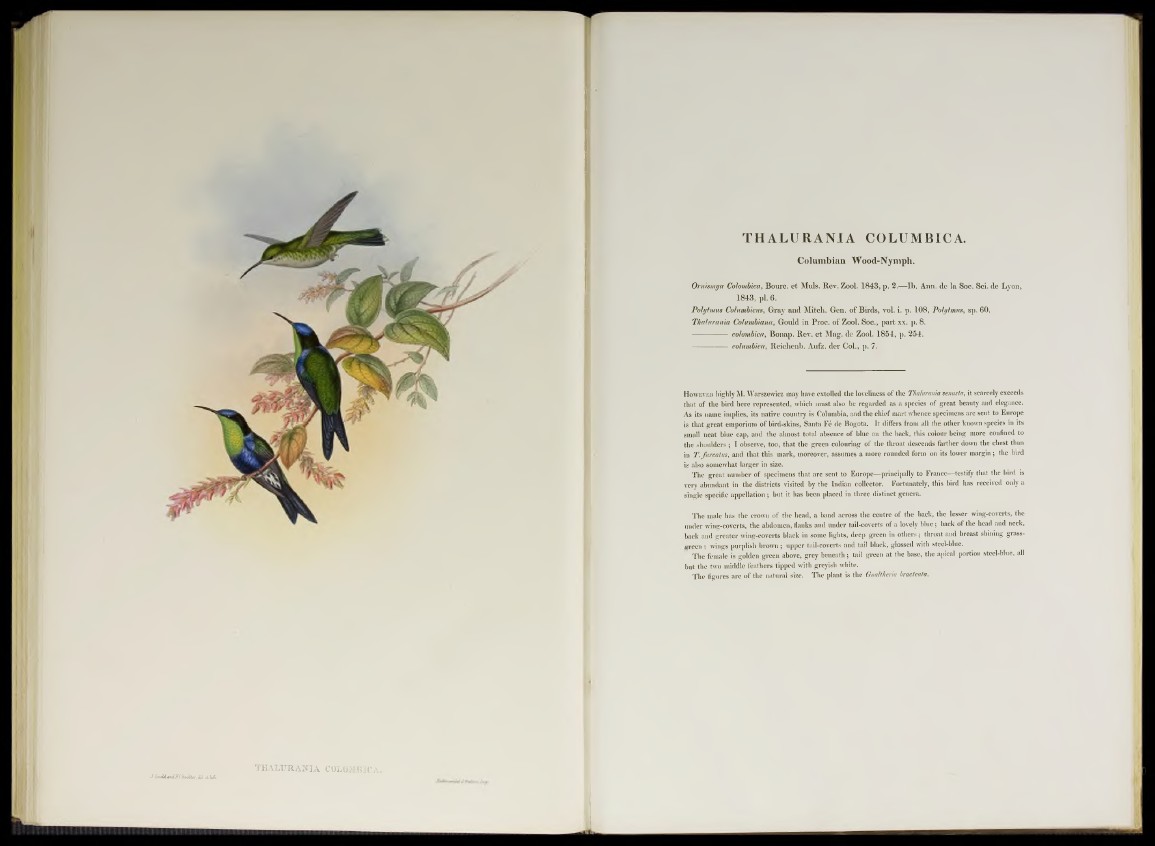
J. GcnJtL aü/JfClw ckba-, ie l. & TiOi
TJIABURAE1A C01QMBICA»
THALURANIA COLUMBICA.
Columbian Wood-Nymph.
Ornismya Colombica, Bourc. et Muls. Rev. Zool. 1843, p. 2.—Ib. Ann. de la Soc. Sci. de Lyon,
1843, pl. 6 .
Polytmm Columbicus, Gray and Mitch. Gen. of Birds, vol. i. p. 108, Polytmm, sp. 60.
Thalurania Columbiana, Gould in Proc. of Zool. Soc., part xx. p. 8.
------------- colombica, Bonap. Bev. et Mag. de Zool. 1854, p. 254.
------------- columbica, Reichenb. Aufz. der Col., p. 7.
H owever highly M. Warszewicz may have extolled the loveliness of the Thalurania venusta, it scarcely exceeds
that of the bird here represented, which must also be regarded as a species of great beauty and elegance.
As its name implies, its native country is Columbia, and the chief mart whence specimens are sent to Europe
is that great emporium of bird-skins, Santa Fé de Bogota. It differs from all the other known species in its
small neat blue cap, and the almost total absence of blue on the back, this colour being more confined to
the shoulders ; I observe, too, that the green colouring of the throat descends farther down the chest than
in T. furcatus, and that this mark, moreover, assumes a more rounded form on its lower margin ; the bird
is also somewliat larger in size.
The great number of specimens that are sent to Europe—principally to France—testify that the bird is
very abundant in the districts visited by the Indian collector. Fortunately, this bird has received only a
single specific appellation; but it has been placed in three distinct genera.
The male has the crown of the liead, a band across the centre of the back, the lesser wing-coverts, the
under wing-coverts, the abdomen, danks and under tail-coverts of a lovely blue; back of the head and neck,
back and greater wing-coverts black in some lights, deep green in otliers; throat and breast shining grass-
°reen ; wings purplish brown ; upper tail-coverts and tail black, glossed with steel-blue.
The female is golden green above, grey beneath; tail green at the base, the apical portion steel-blue, all
but the two middle feathers tipped with greyish white.
The figures are of the natural size. The plant is the Gaaltheria bracteata.
I